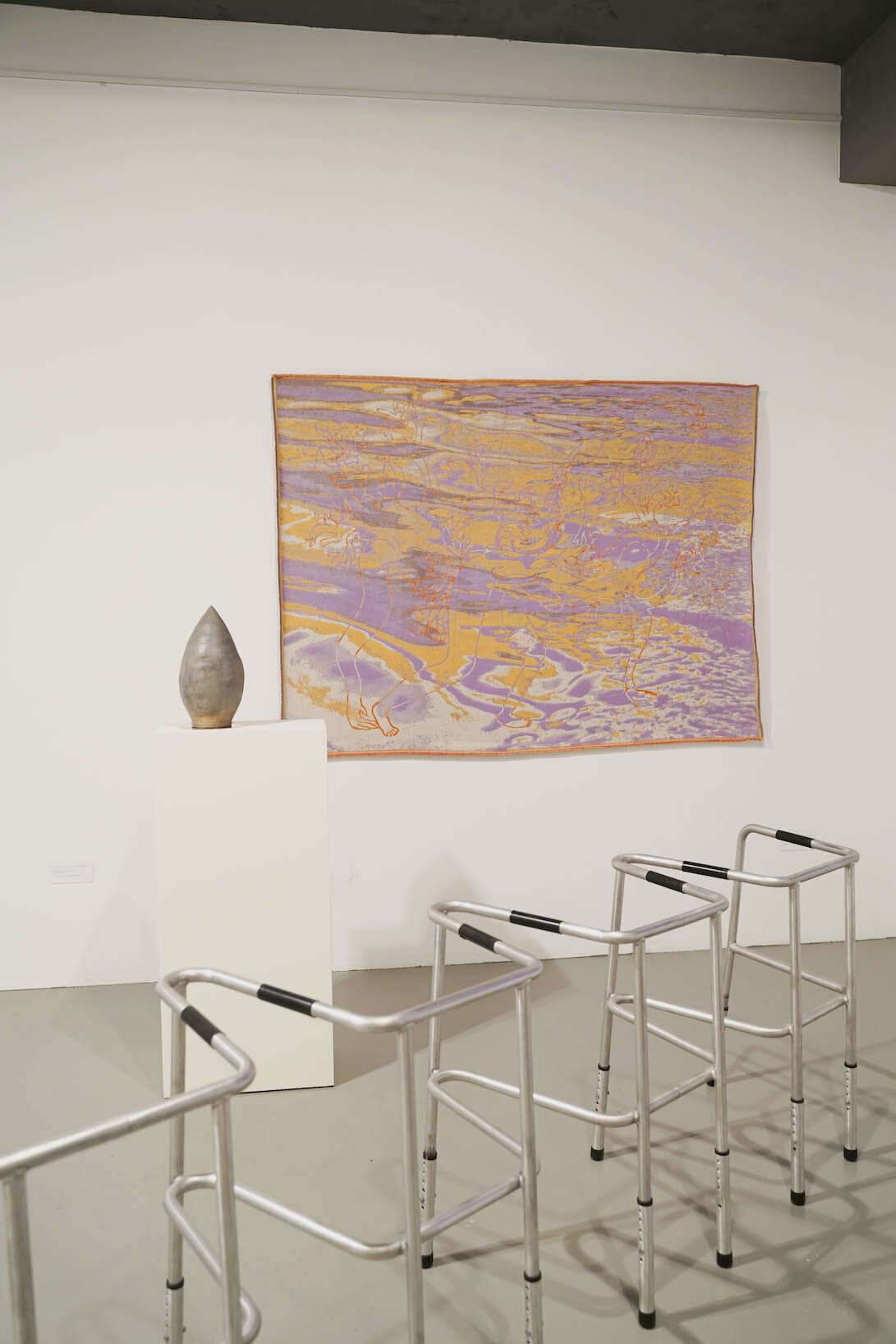
Agnieszka Brzeżanska
*1972, Poland
lives and works in Warsaw, Poland
EN
When it comes to planetary destruction, the angst many of us feel today is palpable. Environmental activism and calls to protect the planet have reached a near-fever pitch. In light of these developments, Gdańsk-born artist Agnieszka Brzeżańska (*1972, Poland) imagines that the entire planet has been declared a national park – a delineated space that protects unique natural, cultural and recreational resources. James Cadle’s “The Flag of Earth” (1970) sets the tone for Brzeżańska’s participation in the Biennale Gherdëina 7. Designed by a rural farmer from Homer, Illinois, the flag consists of a black background with a yellow arc on the left symbolising the sun, a blue circle in the middle representing the earth and a small, white circle in the bottom right signifying the moon. Brzeżańska focuses on the cosmic order and the influence of planetary life on our existence, but also on the assertion found in New Age philosophy that the frequency of 528 hertz, the Solfeggio-frequency, exercises a healing effect on the human DNA structure. The situation is similar to her works in the exhibition. In addition to a selection of large-format paintings, the artist presents a hand-knotted carpet which marks the starting point of the National Park Project and was traditionally made by female Polish weavers. Furthermore, she installed two mountain models made of clay, from which the songs emanate that the artist collects in the course of her research and integrates into her artistic process, as a motif in the description of nature and the present, in order to echo the grounding of the theme.
IT
Quando si tratta di distruzione planetaria, l’angoscia che molti di noi sentono oggi è palpabile. L’attivismo ambientale e gli appelli a proteggere il pianeta hanno raggiunto un livello quasi febbrile. Alla luce di questi sviluppi, l’artista Agnieszka Brzeżańska (*1972, Polonia) immagina che l’intero pianeta sia stato dichiarato Parco Nazionale, ovvero uno spazio per la protezione delle risorse naturali e culturali. La “Bandiera della Terra” di James Cadle dà il tono della partecipazione di Brzeżańska alla Biennale Gherdëina 7. Disegnata nel 1970 da un contadino di Homer, Illinois, la bandiera è composta da uno sfondo nero con un arco giallo in alto che rappresenta il sole, un cerchio blu al centro per la Terra e un piccolo cerchio bianco in basso a destra per la luna. Si riflette così sull’ordine cosmico e sull’influenza della vita planetaria sulla nostra esistenza, ma anche sull’idea proveniente dalla filosofia New Age che la frequenza di 528 Heartz, la frequenza del Solfeggio, eserciti un effetto curativo sulla struttura del DNA umano. Allo stesso modo, l’artista espone una selezione di dipinti di grande formato e un tappeto annodato a mano secondo la tradizione da alcune donne polacche, punto di partenza del progetto del Parco Nazionale. Infine, da due tronchi in ceramica provengono alcune canzoni che l’artista raccoglie nel corso della sua ricerca e che incorpora nel suo processo artistico per descrivere la natura e il presente.
DE
Wenn es um die Zerstörung des Planeten geht, ist die Angst, die viele von uns heute empfinden, greifbar. Mit seinen Aufrufen zum Schutz des Planeten hat der Umwelt-Aktivismus einen fast fieberhaften Höhepunkt erreicht.
Angesichts dieser Entwicklung hat die in Gdańsk geborene Künstlerin Agnieszka Brzeżańska (*1972, Polen) die Vorstellung entworfen, dass der gesamte Planet zum Nationalpark erklärt wird, um als umschlossener Raum, die einzigartige Natur-, Kultur- und Erholungsressourcen zu schützen. Das Werk „The Flag of Earth“ (1970) von James Cadle dient als Ausgangspunkt für die Teilnahme der Künstlerin an der Biennale Gherdëina 7. Die ursprünglich von einem Farmer aus Homer, Illinois, entworfene Flagge besteht aus einem schwarzen Hintergrund mit einem gelben Bogen auf der linken Seite, der die Sonne darstellt, und einem blauen Kreis in der Mitte, der die Erde darstellt, sowie einem kleinen, weißen Kreis unten rechts, der den Mond darstellt. Mit der Aneignung dieser Flagge bezieht sich die Künstlerin auf die Einflussnahme der kosmischen Ordnung und des planetarischen Lebens auf unsere Existenz, wie auch auf die aus der New-Age-Philosophie stammende Idee, dass die Frequenz von 528 Heartz, die Frequenz des Solfeggio, eine heilende Wirkung auf die Struktur der menschlichen DNA ausübe.
Ähnlich verhält es sich mit den Arbeiten in der Ausstellung. So zeigt die Künstlerin neben einer Auswahl großformatiger Malereien einen handgeknüpften Teppich, der den Startpunkt des Nationalpark Projektes markiert und auf traditionelle Weise von polnischen Weberinnen gefertigt wurde. Zusätzlich installierte sie noch zwei aus Ton gefertigte Baumstümpfe, aus deren Innerem heraus jene Lieder ertönen, die die Künstlerin im Zuge ihrer Recherchen sammelte und als Motiv der Natur- und Gegenwartsbeschreibung in ihren künstlerischen Prozess einband, um der Erdung des Themas einen Nachhall zu geben.





